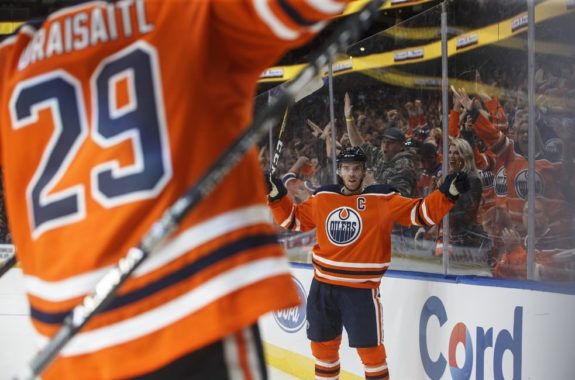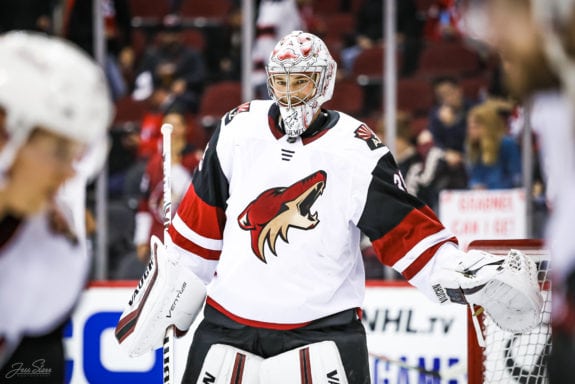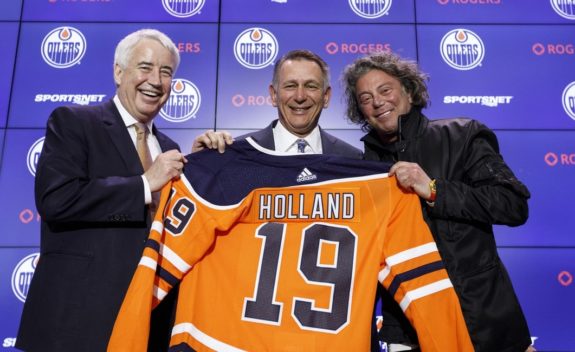The Edmonton Oilers have only made the playoffs one time since the 2005-06 season when they lost in the Stanley Cup Final to the Carolina Hurricanes. The Oilers have two of the top five forwards in the NHL on their roster. Connor McDavid and Leon Draisaitl are both extremely young and talented, and were the top two scorers in the NHL before the coronavirus stoppage. That did not stop the Chicago Blackhawks from eliminating them from the playoffs in four games in their best-of-five qualifying series. So, what went wrong for the Oilers? Edmonton now looks to the offseason and what they can do to improve their roster.
Related: Oilers With 100-Point Season
A lack of scoring from anyone other than McDavid and Draisaitl, as well as Ryan Nugent-Hopkins, was one reason that Chicago was able to eliminate them. Zack Kassian was moved to the fourth line after he was ineffective in the first game. Rookie Kailer Yamamoto, who was called up in January from the AHL, did not score in any of the four games.

The Oilers are going to need a goalie to replace Mike Smith. He and Mikko Koskinen split starts during the 2019-20 season. Smith is 38 years old, so the team might look to move on from him and get younger at the backup goalie position.
Oilers’ general manager (GM) Ken Holland had issues managing the salary cap in his last job as GM of the Detroit Red Wings. He made several deals to acquire veteran players in order to keep their playoff streak alive. The Red Wings are now paying for this as new GM Steve Yzerman begins to rebuild their roster. That is not to say that Holland cannot be successful in Edmonton.
According to Frank Seravalli of TSN, there are 13 teams that will carry salary cap overages into the 2020-21 NHL season. That is almost half of the league.
Free Agent Goaltending Targets
According to Spotrac, the Oilers have $72,051,165 in salary for the 2020-21 season. This leaves them with $8,766,182 in total salary cap space. This is going to be an issue for them when looking to improve their roster, including at the backup goaltender position.
The following is a breakdown of the salary cap:
- Upper Limit = $81.5 million
- Midpoint = $70.9 million
- Lower Limit = $60.2 million
There are eight goalies who could be available this offseason who were the number one goalie on their team during the 2019-20 season. Braden Holtby (UFA), Frederik Andersen (UFA), Corey Crawford (UFA), Matt Murray (RFA), Marc-Andre Fleury, Jacob Markstrom (UFA), Robin Lehner (UFA), and Darcy Kuemper (UFA) are all goaltenders that the Oilers could target this offseason. Some of these could be too expensive for Edmonton to realistically target, though. Lehner, Andersen, and Markstrom are among these that are too expensive, as well as Murray. Unless the Vegas Golden Knights are willing to eat the majority of Fleury’s salary, he is most likely in the same boat.
One way for the Oilers to make Kuemper’s salary work under the cap, which will be flat due to the coronavirus pause and the fact that there will be no fans in the stands for the foreseeable future, is to move some salary on defense, unless the Arizona Coyotes retain part of his salary.

With just over $72,000,000 in salary cap space commitments, the Oilers will have some work to do to reshape their roster. Holland can do this if he can learn from the salary cap “mistakes” he made while the GM in Detroit.
In a recent article in the Edmonton Journal Bruce McCurdy wrote, “according to multiple sources, in 2019-20 the Edmonton Oilers are deemed to have exceeded the NHL salary cap by close to $700,000. The overages were incurred by the application of bonus clauses written into the contracts of some of the team’s youngest players along with their very oldest.”
In a recent post, Jim Parsons wrote about the NHL ratifying a new collective bargaining agreement (CBA). The CBA was ratified on July 6 and the four-year extension to the current CBA goes through Sept. 15, 2026. There are several elements of the salary cap for the Oilers to consider when it comes to signing free agents. They include:

- Free agency will begin on either October 9 or 11.
- To make up for pandemic-related financial losses, players will defer 10 percent of their salaries.
- No-trade and no-movement clauses will move with the player.
- Salary bonuses will not be touched.
- Escrow will be limited. The cap for escrow for the 2020-21 season will be 20 percent and eventually will drop to 6 percent.
- Minimum salaries in the NHL will increase marginally.
- When it comes to salary cap recapture penalties according to Michael Russo of The Athletic, “there is no longer a charge greater than the contract’s (average annual value) AAV in any year, but charge continues until the full overage is paid off.”
- Teams will have a small window to sign prospects to entry-level contracts (Monday afternoon through Wednesday afternoon), but it is not clear if they will be allowed to take part in training camps.
Two different sources have put the amount that the Oilers went over the salary cap at between $670,000 and $680,000. There are going to be challenges when it comes to trying to improve Edmonton’s roster. They need to do this in order to advance further in the playoffs. Without these improvements, the Oilers will waste the careers of McDavid and Draisaitl.